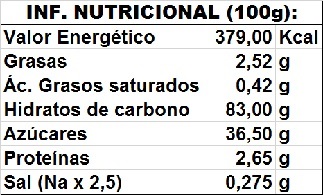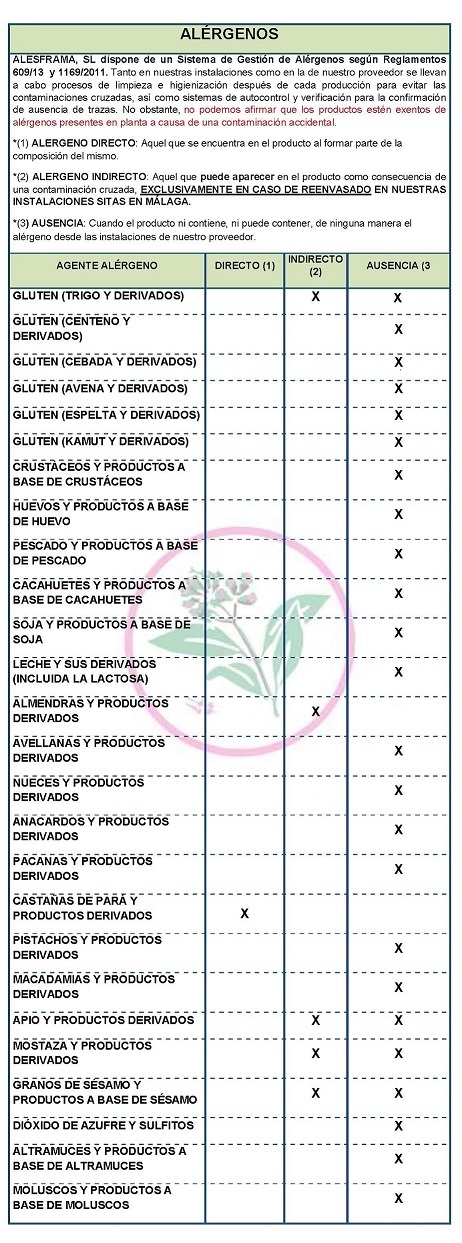My baskets
You still don't have anything in your shopping cart
My baskets
You still don't have anything in your shopping cart

{{getOldPrice()}}{{getPrice()}}
 ¡ Buying this product you get {{calculatedProductMenttos()}} menttos !
¡ Buying this product you get {{calculatedProductMenttos()}} menttos !

Without gluten

Without gluten
The pilonga chestnut is the natural peeled chestnut that, thanks to the process of dehydration to which it is subjected, loses up to 20% of its moisture.
It is very easy to digest, providing fiber, carbohydrates and, unlike other nuts, very little fat
It is very easy to digest, providing fiber, carbohydrates and, unlike other nuts, very little fat
The pilonga chestnut is the natural peeled chestnut that, thanks to the dehydration process to which it is subjected, loses up to 20% of its moisture
It is very easy to digest, providing fiber, carbohydrates and, unlike the rest of nuts, very little amount of fat
Before Christopher Columbus brought corn and potatoes from America, the chestnut, along with wheat, was the basis of our diet
In the 21st century, the chestnut has been recovered for gastronomic use, being incorporated into numerous recipes, both sweet and savory, as it brings to the dishes, in addition to flavor, a touch of elegant innovation.
Chestnuts, together with wheat, constituted the basis of our food
INGREDIENTS: Chestnut fruit, shelled and dried
PRESENTATION AND ORGANOLEPTIC CHARACTERISTICS
Nutritional values (100g)

Preservation
Keep in a cool, dry place, away from strong odors and sources of contamination.
DECLARATION OF ALLERGENS
DECLARATION OF ALLERGENS
According to the technical data sheet of the supplier(s):
Contains NO GLUTEN AS AN INGREDIENT, BUT THE ABSENCE OF TRACE CANNOT BE GUARANTEED.
ALLERGENS: DRY FRUIT HUSK
Because of cross-contamination it may contain Celeriac, nuts, mustard, and sesame."
At both our facilities and our supplier's, cleaning and sanitizing processes are carried out after each production to avoid cross-contamination, as well as self-monitoring and verification systems for the confirmation of absence of traces,. However, we cannot claim that the products are free of allergens present in the plant due to accidental contamination
COMMUNITY DIRECTIVE 2006/142/EC ON INGREDIENTS AND LABELLING OF ALLERGENS In accordance with Directive 2003/89/EC the following is a list of allergenic ingredients that must be mentioned in the labeling for the purpose of consumer protection since the presence of these substances may cause allergies. DECLARATION OF NOT GENETICALLY MODIFIED 
APPLICABLE LEGISLATION
APTITUDE FOR ETHNIC GROUPS AND OTHERS:
HALAL FITNESS : YES, official certificate not available
DIABETICS SUITABILITY : YES
FIT FOR VEGETARIANS : YES
FIT FOR VEGANISTS : YES
FIT FOR VEGANS : YES
CELIACS SUITABILITY : NO
NOT SUITABLE FOR CELIACS : NO
The pilonga chestnut is the natural peeled chestnut that, thanks to the process of dehydration to which it is subjected, loses up to 20% of its moisture.
It is very easy to digest, providing fiber, carbohydrates and, unlike other nuts, very little fat
It is very easy to digest, providing fiber, carbohydrates and, unlike other nuts, very little fat
The pilonga chestnut is the natural peeled chestnut that, thanks to the dehydration process to which it is subjected, loses up to 20% of its moisture
It is very easy to digest, providing fiber, carbohydrates and, unlike the rest of nuts, very little amount of fat
Before Christopher Columbus brought corn and potatoes from America, the chestnut, along with wheat, was the basis of our diet
In the 21st century, the chestnut has been recovered for gastronomic use, being incorporated into numerous recipes, both sweet and savory, as it brings to the dishes, in addition to flavor, a touch of elegant innovation.
Chestnuts, together with wheat, constituted the basis of our food
INGREDIENTS: Chestnut fruit, shelled and dried
PRESENTATION AND ORGANOLEPTIC CHARACTERISTICS
Nutritional values (100g)

Preservation
Keep in a cool, dry place, away from strong odors and sources of contamination.
DECLARATION OF ALLERGENS
DECLARATION OF ALLERGENS
According to the technical data sheet of the supplier(s):
Contains NO GLUTEN AS AN INGREDIENT, BUT THE ABSENCE OF TRACE CANNOT BE GUARANTEED.
ALLERGENS: DRY FRUIT HUSK
Because of cross-contamination it may contain Celeriac, nuts, mustard, and sesame."
At both our facilities and our supplier's, cleaning and sanitizing processes are carried out after each production to avoid cross-contamination, as well as self-monitoring and verification systems for the confirmation of absence of traces,. However, we cannot claim that the products are free of allergens present in the plant due to accidental contamination
COMMUNITY DIRECTIVE 2006/142/EC ON INGREDIENTS AND LABELLING OF ALLERGENS In accordance with Directive 2003/89/EC the following is a list of allergenic ingredients that must be mentioned in the labeling for the purpose of consumer protection since the presence of these substances may cause allergies. DECLARATION OF NOT GENETICALLY MODIFIED 
APPLICABLE LEGISLATION
APTITUDE FOR ETHNIC GROUPS AND OTHERS:
HALAL FITNESS : YES, official certificate not available
DIABETICS SUITABILITY : YES
FIT FOR VEGETARIANS : YES
FIT FOR VEGANISTS : YES
FIT FOR VEGANS : YES
CELIACS SUITABILITY : NO
NOT SUITABLE FOR CELIACS : NO
